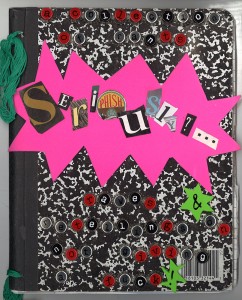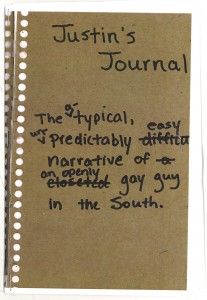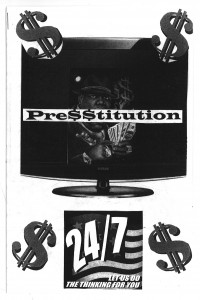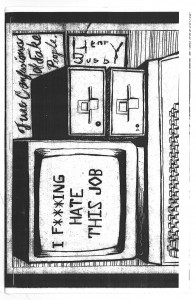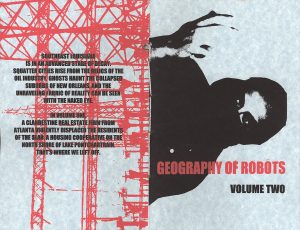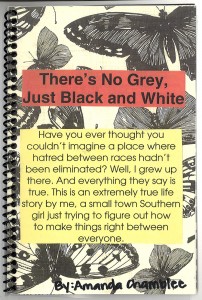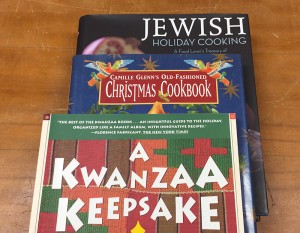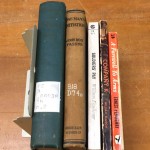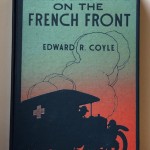As a welcome back to campus, we’re sharing some of the collection finding aids that have recently gone online in Acumen — over 100 last month!
This week, the highlights focus on the community: businesses, churches and other organizations, and community life. (Click on any of the images below to see a larger version.)
Guide to the Reward Notice collection
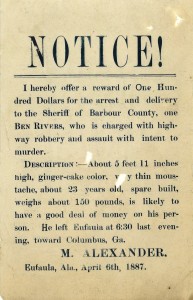
Contains a collection of reward notices posted in Alabama for persons wanted for crimes committed in Alabama and other states. Various formats of notices are represented, including broadsides, letters, postcards, and telegrams. A large number of them are not dated.
Guide to the Selma and Meridian Railroad ledger and journal
Two corporate account books for the Selma and Meridian Railroad, 1885: the ledger, which details payments and receipts by date; and the journal, which records them by firm or individual.
Guide to the Tennessee Coal, Iron and Railroad Company documents
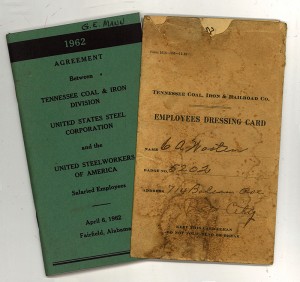 A miscellany of materials relating to the Tennessee Coal, Iron, and Railway Company’s Fairfield Steelworks, later a part of the United States Steel Company’s industrial empire.
A miscellany of materials relating to the Tennessee Coal, Iron, and Railway Company’s Fairfield Steelworks, later a part of the United States Steel Company’s industrial empire.
Guide to the Republic Steel records
This collection contains correspondence, security and insurance records, and other materials of this Birmingham steel company.
Guide to the Julian Lee Rayford papers
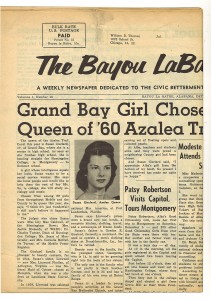 Articles and other writings of this Mobile, Alabama, artist, journalist, folklorist, and muralist who was known for his work to increase awareness of Mobilian Joe Cain who revived Mardi Gras after the Civil War.
Articles and other writings of this Mobile, Alabama, artist, journalist, folklorist, and muralist who was known for his work to increase awareness of Mobilian Joe Cain who revived Mardi Gras after the Civil War.
Guide to the Harry Mell Ayers papers
Contains the correspondence of this New Deal Democrat and Civil Rights supporter who owned the newspaper, the Anniston Star. The correspondence deals with local, state, and national political campaigns, elections, education, civil rights, editorials, letters to the editor, and events of the times.
Guide to the Grant’s Creek Baptist Church Record
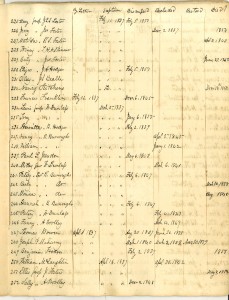 The collection contains one notebook recording the names of members of Grant’s Creek Baptist Church, located in Fosters, Alabama, the date they joined the church, were baptized, and, in some instances, when they were dismissed, excluded, restored, and died.
The collection contains one notebook recording the names of members of Grant’s Creek Baptist Church, located in Fosters, Alabama, the date they joined the church, were baptized, and, in some instances, when they were dismissed, excluded, restored, and died.
Guide to the Sardis Baptist Church, Heiberger, Alabama, records
This collection contains records, 1846-1951, including lists of members, pastors, dismissals, and minutes of monthly meetings, as well as a short history of the church. Baptist church in Heiberger, Perry County, Alabama, established 1846.
Guide to the Ancient Free and Accepted Masons Collection
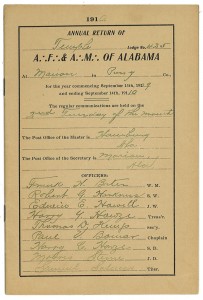 The collection contains twenty-one annual return reports, 1908-1930, of the Temple Lodge, number 425, of the Ancient Free and Accepted Masons of Alabama, at Marion in Perry County.
The collection contains twenty-one annual return reports, 1908-1930, of the Temple Lodge, number 425, of the Ancient Free and Accepted Masons of Alabama, at Marion in Perry County.
Guide to the Ku Klux Klan Pamphlet
The collection contains one pamphlet with the names of Tuscaloosa (Alabama) residents who “signed the petition sent to Governor [George] Wallace,” presumably regarding the integration of the University of Alabama, and the names of the employers of the signers.
Guide to the Quaker Club records
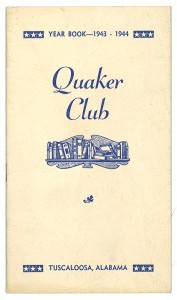 Minutes, yearbooks, members’ correspondence, newspaper clippings, photos, event programs, and scrapbooks of this Tuscaloosa, Alabama, young women’s civic organization.
Minutes, yearbooks, members’ correspondence, newspaper clippings, photos, event programs, and scrapbooks of this Tuscaloosa, Alabama, young women’s civic organization.


